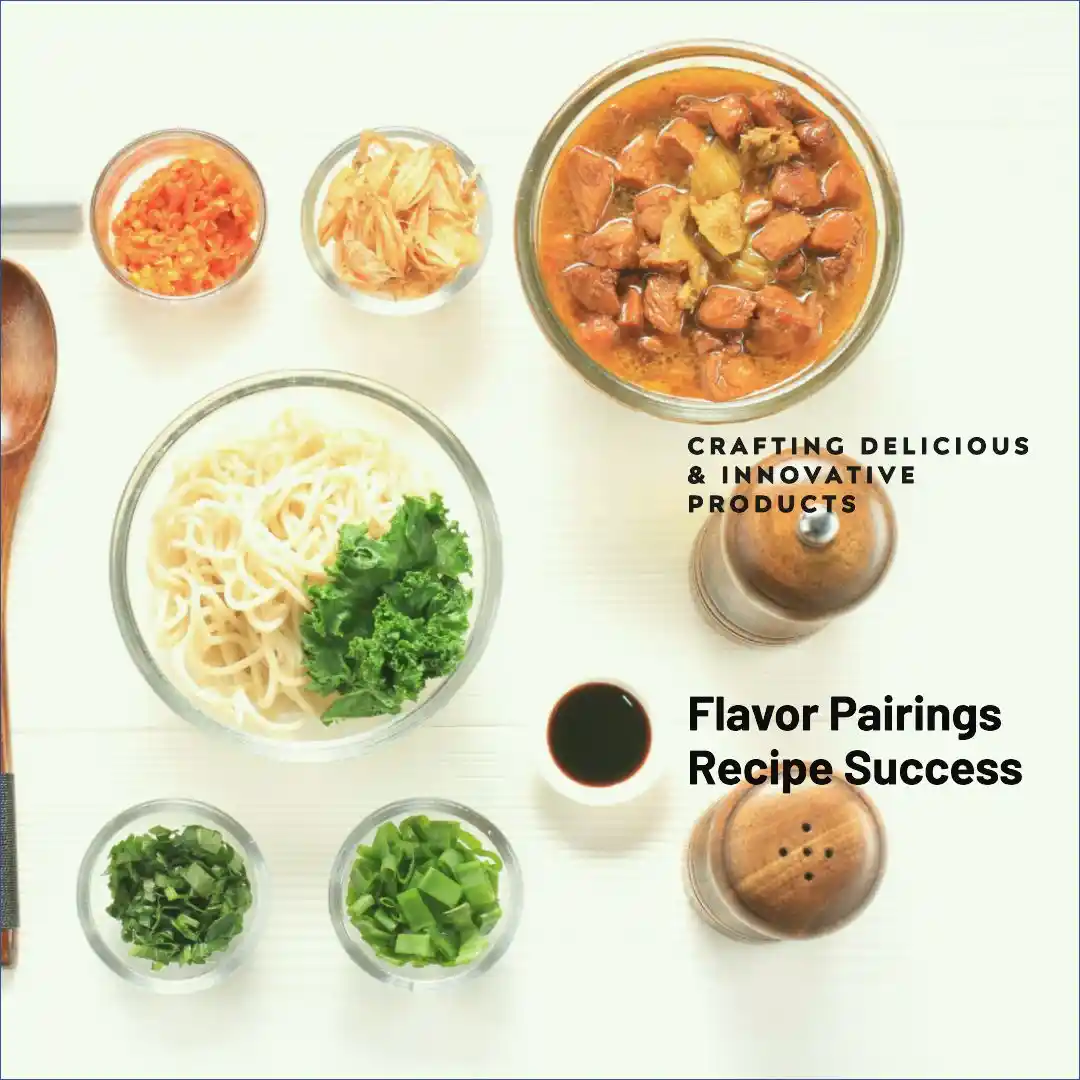Introduction
Flavor pairings are the backbone of exceptional culinary creations. They can transform ordinary dishes into memorable experiences, leaving a lasting impression on consumers. But successful flavor pairing is more than just a lucky guess or intuition – it’s a science that Tasteology, a global culinary consultancy, has mastered. We leverage scientific expertise to help food businesses develop innovative and delicious products that captivate the palate.
Why Flavor Pairings Matter
In today’s competitive food industry, flavor is king. Consumers are constantly seeking new and exciting taste experiences. By understanding the science behind flavor pairings, food businesses can:
- Develop unique and memorable products: Stand out from the competition by offering innovative flavor combinations that intrigue and delight consumers.
- Improve product appeal: Enhance the overall sensory experience of your products, making them more desirable and appealing to a wider audience.
- Increase customer satisfaction: Deliver delicious and well-balanced products that keep customers coming back for more.
- Reduce development costs: Minimize trial and error by utilizing scientific principles to guide flavor pairing decisions.
Understanding the Science Behind Flavor Pairings
Aromatic Compound Overlap
One of the key principles of flavor pairing is the concept of aromatic compound overlap. This theory suggests that ingredients that share similar aromatic compounds are more likely to pair well together. For example, strawberries and chocolate both contain a compound called methyl anthranilate, which contributes to their complementary flavors.
Balancing Basic Tastes
Successful flavor pairing also involves balancing the five basic tastes: sweet, sour, salty, bitter, and umami. By strategically combining ingredients that represent different taste profiles, chefs can create a harmonious and satisfying flavor profile. For example, the bitterness of dark chocolate can be balanced by the sweetness of caramel, while the saltiness of Parmesan cheese can enhance the umami flavors of a tomato sauce.
The Role of Sensory Science
Sensory science plays a crucial role in understanding and optimizing flavor pairings. Through techniques like sensory evaluation, Tasteology’s experts can objectively measure and analyze the sensory properties of ingredients and finished products. This data helps us understand how different flavor combinations are perceived and allows us to make informed decisions during recipe development and flavor optimization.
Tasteology’s Approach to Flavor Pairing
At Tasteology, we combine scientific principles with culinary artistry to create winning flavor combinations. Our approach involves:
- In-depth ingredient analysis: We analyze the aromatic profiles of individual ingredients to identify potential pairing partners.
- Sensory evaluation: We conduct rigorous sensory testing to assess the perceived harmony and balance of different flavor combinations.
- Culinary expertise: Our team of experienced chefs and food scientists leverage their deep understanding of culinary techniques and flavor profiles to guide the development process.
- Iterative refinement: We continuously refine and optimize recipes based on sensory feedback and market research to ensure that the final product meets the highest standards of taste and quality.
Practical Tips for Flavor Pairing
Start with a Flavor Wheel:
A flavor wheel is a visual tool that categorizes different flavor profiles and their corresponding ingredients. Using a flavor wheel can help you identify potential pairing partners based on shared aromatic compounds.
Experiment with Contrasting Flavors:
Don’t be afraid to experiment with contrasting flavors, such as sweet and sour or bitter and salty. These combinations can create exciting and unexpected taste experiences.
Consider Texture and Temperature:
Texture and temperature can also play a significant role in flavor perception. For example, a crunchy texture can enhance the sweetness of a fruit, while a warm temperature can intensify the aroma of a spice.
Don’t Forget Cultural Influences:
Different cultures have unique flavor pairing traditions. Exploring these traditions can inspire new and innovative combinations.
Common Challenges in Flavor Pairing
Ingredient Availability:
Seasonal variations and sourcing limitations can sometimes make it challenging to obtain specific ingredients needed for a desired flavor pairing.
Consumer Preferences:
Consumer preferences for flavor pairings can vary widely based on individual tastes and cultural backgrounds.
Shelf Life and Stability:
Certain flavor pairings may not be stable over time or may be affected by processing and storage conditions.
Conclusion
Flavor pairing is a critical component of successful recipe development. By leveraging scientific principles, culinary expertise, and sensory evaluation, Tasteology helps food businesses create innovative and delicious products that stand out in the marketplace. Whether you’re developing a new product or looking to enhance an existing one, understanding the science of flavor pairing can unlock a world of culinary possibilities.


